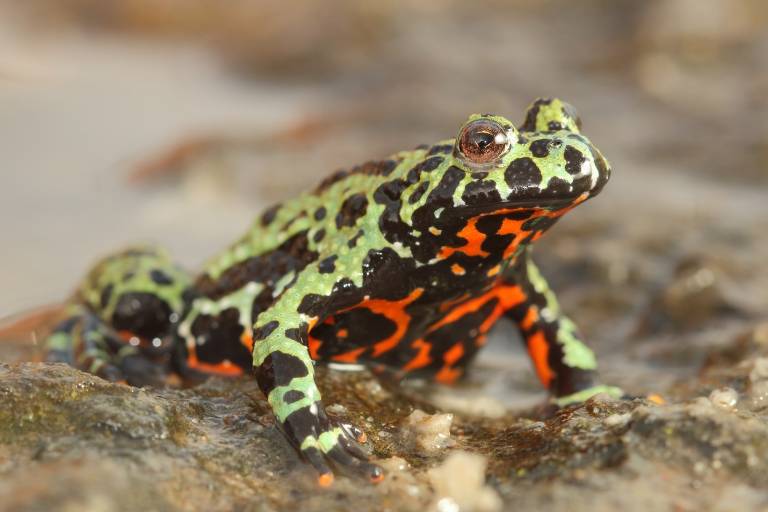Genome sequencing reveals origin of killer fungus behind the 'amphibian plague'
11 May 2018
A deadly fungus responsible for the devastation of amphibian populations around the world has spread from East Asia, according to new research led by scientists at UCL, Imperial College London and Zoological Society of London.

The fungus Batrachochytrium dendrobatidis (Bd), has long been recognised as one the main causes of the decline and extinction of species of frogs, toads, newts and other amphibians across several continents.
Bd is distributed around the world but to date it was not known where and when killer strains of the pathogen first emerged.
Now, new research published in Science indicates the killer fungus currently ravaging global amphibian populations originated in East Asia.
The researchers highlight the need to tighten biosecurity across borders, including a potential ban on trade in amphibians as pets to ensure the survival of vulnerable species.
"For some time scientists have recognised that the amphibian killing fungus, Bd, has been behind the worldwide decline in the amphibian species. However, the geographical origin of the pathogen and timing of its worldwide expansion remained unknown. In our study we show that East Asia was the hotspot for Bd and that expansion happened some 50 years ago," said Professor Francois Balloux (UCL Genetics Institute).
Chytrid is passed from animal to animal and spreads rapidly in the wild, causing catastrophic mortality and declines in some species, while others are less affected.
The fungus attacks the animal's skin, affecting their ability to regulate water and electrolyte levels and leading to heart failure.
In this latest study, an international team involving 38 institutions gathered samples of the pathogen from around the world. They sequenced the genomes of these samples, combining the data with genomes from previous Bd studies to make a collection of 234 samples.
Researchers used sophisticated computational tools to analyse the data, looking at differences between the genomes. From the samples, they identified four main genetic lineages of the fungus, three of which are distributed globally. A fourth lineage was found only in Korea, on frogs native to the region.
Cultures from this Korean lineage were found to contain much more genetic diversity than any other lineage. Deeper analysis of the Korean Bd showed no history of global outbreaks within their genomes indicating the Korean strains were native to the region, and most closely resemble the ancestor of all modern Bd.
Using the genetic data, the team estimated when the killer strain of Bd currently plaguing amphibians diverged from its most recent common ancestor. Their findings support the idea that rather than dating back thousands of years, as previously thought, the range of the disease expanded some 50 years ago, coinciding with the rapid global expansion of intercontinental trade. The team's finding Asian strains of Bd in pet Oriental fire-bellied toads strongly supports this idea.
According to the researchers, human movement of amphibians - such as through the pet trade - has directly contributed to spreading the pathogen around the world. They add that the paper provides strong evidence for a ban on trade in amphibians from Asia, due to the high risk associated with exporting previously unknown strains of chytrid out of this region.
"Globalisation is fuelling the spread of many human, animal and plant pathogens. Scientists have been developing the tools for real-time surveillance of emerging pathogens. Now, these need to be implemented in international surveillance networks to avert further expansion of pathogens with dramatic consequences for health, food security or biodiversity," concluded Professor Balloux.
The research was supported by funding from the National Environment Research Council and the European Research Council.
Links
Images
Credit: UCL
Media contact
Natasha Downes
Tel: +44 (0)20 3108 3844
Email: n.downes [at] ucl.ac.uk
 Close
Close

